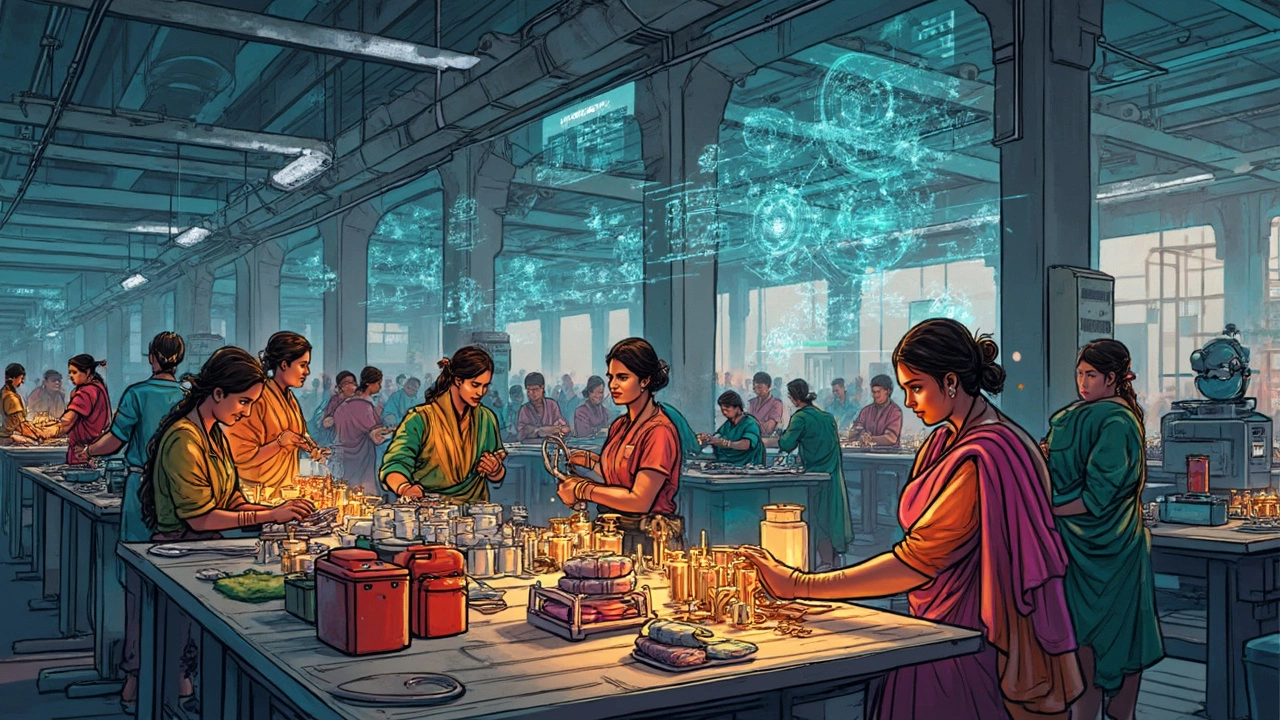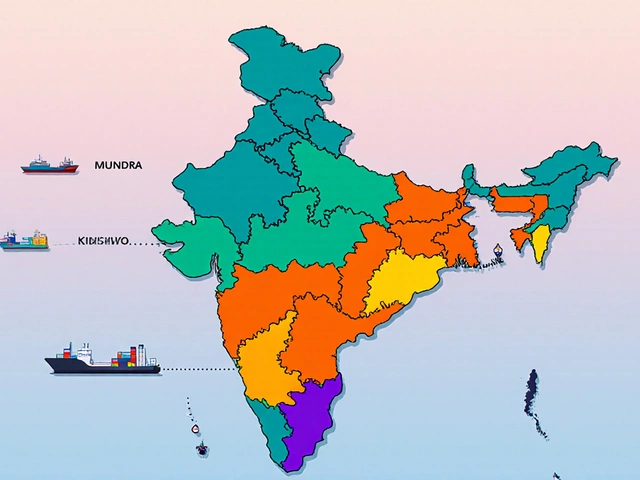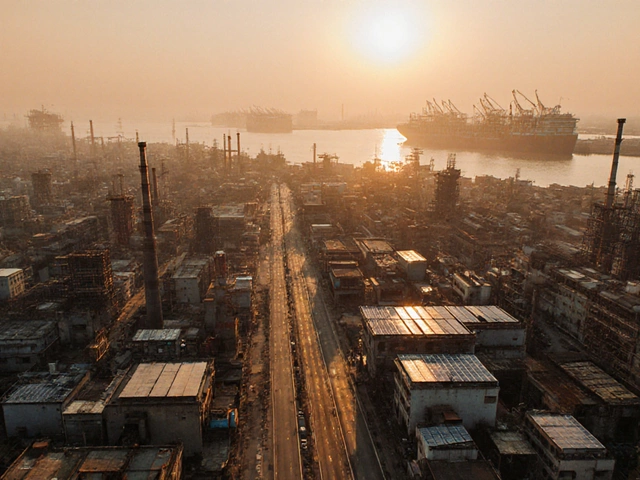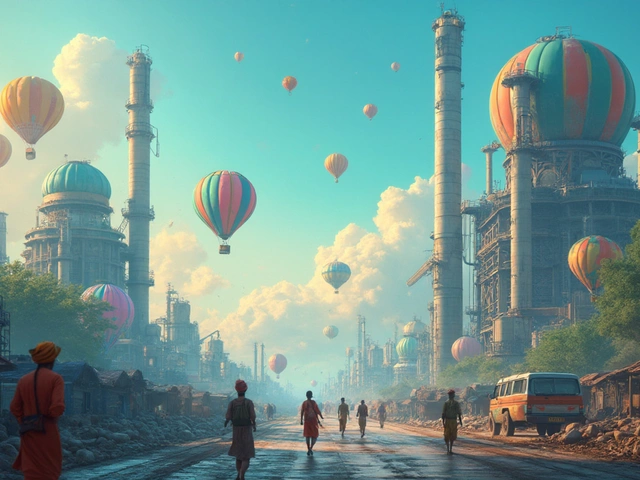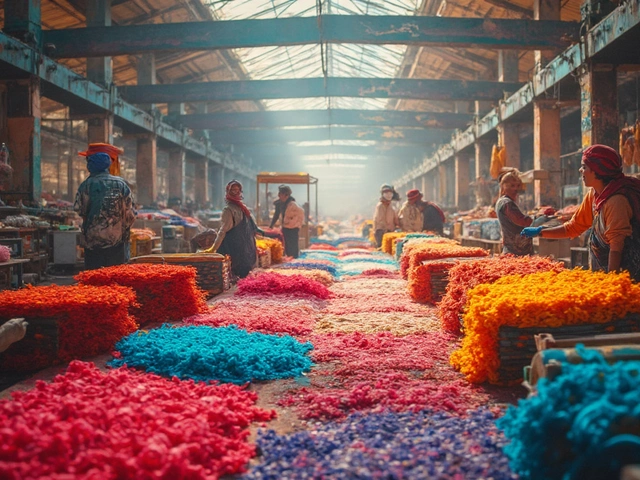Ever thought about what 'manufacturing' really means when the government talks about it? It's not just about factory floors and assembly lines; it's a term with a specific definition that can influence everything from business regulations to tax breaks. In official terms, manufacturing is all about the transformation of raw materials into finished products. But, there's more to it than just that.
For instance, did you know that the government’s take on manufacturing affects how businesses operate and qualify for various schemes? Understanding this can be crucial if you're involved in the industry or considering jumping in.
Policies surrounding manufacturing aren't just born out of thin air. They’re shaped by a mix of historical context, current economic needs, and future trends. Knowing what's behind these policies can give businesses an edge, whether that’s capitalizing on new opportunities or avoiding potential pitfalls.
- Government Definition of Manufacturing
- Importance of Manufacturing in the Economy
- Policies Shaping Manufacturing
- Government Schemes and Support
- Surprising Facts About Manufacturing Standards
- Tips for Navigating Government Programs
Government Definition of Manufacturing
When we talk about manufacturing in official terms, we're referring to a pretty specific set of ideas. The government sees manufacturing as the process where raw materials get turned into finished products. Think of it like this: you're taking something basic, using a series of steps, and ending up with something entirely new. And it's not just limited to physical goods. The definition also covers processes like the assembly of parts and even significant modifications or repairs.
For instance, if you're in the business of assembling car parts into a whole vehicle, you're smack dab in the center of manufacturing. Even if you're involved in processes like refining crude oil into gasoline, you're part of the scene. It's all about transformation and adding value to the initial material.
The Impact of Definition
Why do these official definitions even matter? Well, they're more important than you might think. The way government defines manufacturing can impact how businesses operate. It's about figuring out which businesses get to enjoy specific benefits like tax breaks or eligibility for certain sector-specific grants.
The definition helps streamline regulations and ensure that policies are targeted and effective. Without a clear definition, it would be chaos, with businesses having no clear idea of where they stand regarding industry regulations.
Manufacturing in Numbers
We're a numbers-driven world right now, so let's toss in some figures. Here's a look at how the manufacturing industry stacks up:
| Aspect | Data |
|---|---|
| Contribution to GDP | Approximately 11% |
| Employment | Over 8% of the workforce |
| Growth Rate | 2.5% annually |
These stats just highlight the heft that manufacturing carries in the economy. So, getting a grip on the government definition not only helps businesses but is key in understanding economic strategies and schemes that might give your business a boost.
Importance of Manufacturing in the Economy
Manufacturing isn't just the backbone of modern economies—it's the wheels and cogs that keep the whole machine running. It's where raw materials become usable products, from the cars we drive to the clothes we wear. But why does it really matter to the economy?
Job Creation and Economic Growth
First off, the manufacturing sector is a massive job creator. In many countries, it employs a good chunk of the workforce, offering roles across a variety of skill levels. This makes it crucial for reducing unemployment rates and boosting economic growth. Those jobs, in turn, spur demand in other sectors like services and retail.
Innovation and Technology
Manufacturing is also a hotbed for innovation. It’s often where new technologies are tested and adopted first. Think about automation and AI—manufacturing is at the forefront of integrating these technologies, which can then expand to other sectors. This tech growth keeps countries competitive on the global stage.
Contribution to Exports
Countries aim to have a strong manufacturing base to bolster their exports. The export of manufactured goods plays a significant role in balancing trade and bringing in foreign exchange. People might not realize it, but goods like electronics, machinery, and food products that get shipped overseas often come from bustling factories.
Local Community Impact
Beyond the big-picture economy, manufacturing has a solid local impact too. Factories and production lines often support local small businesses, provide infrastructure development, and improve living standards in their areas. This can lead to a virtuous cycle of economic prosperity.
With manufacturing being so integral to the economy, it's no wonder governments around the world set up schemes to support and develop this vital sector. Whether it’s through incentives or policy reforms, the aim is to sustain this dynamic part of the economy.
Policies Shaping Manufacturing
Government policies play a huge role in determining how the manufacturing industry operates and grows. These policies are designed to boost economic activity and ensure that the industry remains robust and competitive.
Historical Impact
Historically, policies have been influenced by global events, technological advancements, and changes in trade dynamics. For example, after the GFC in 2008, many governments globally tweaked manufacturing policies to stimulate job creation and enhance local production.
Current Policies
Right now, one of the major themes in governmental policies is sustainability. Manufacturing needs to align with environmental goals, pushing factories to adopt greener technologies. A popular policy example involves providing tax credits to companies reducing emissions or improving energy efficiency in their processes.
"Governments need to align manufacturing policies with both economic growth and sustainability goals." – World Manufacturing Forum
Future Directions
Looking ahead, digital transformation is rewriting policies as businesses embrace Industry 4.0. Policies are increasingly focused on supporting digital infrastructure and skills training for workers, making sure the workforce is ready for tech-driven changes.
Incentives and Support
- Tax Incentives: Designed to encourage investment in technology and innovation.
- Grants and Subsidies: For startups and SMEs, supporting new projects and expansions.
- Training Programs: Aimed at upskilling workers, especially in the use of new technologies.
These policies help ensure that manufacturing remains a vital part of the economy, promoting growth and technological advancement. To navigate these policies and make the most of available benefits, businesses typically consult industry experts or legal advisors.

Government Schemes and Support
When it comes to boosting the manufacturing industry, the government isn't just sitting on its hands. They've rolled out several schemes to help businesses grow, innovate, and compete globally. But which ones are worth checking out, and how can you make the most of them?
R&D Tax Incentive
If you're in manufacturing and you love a bit of innovation, the R&D Tax Incentive is something you might want to look into. It's designed to encourage companies to spend more on research and development. By doing that, you can get some of those expenses back as tax offsets—definitely a handy tool for businesses eyeing expansion.
Manufacturing Modernisation Fund
The Manufacturing Modernisation Fund is another program aimed at helping manufacturers upgrade their facilities and adopt new technologies. It’s about making operations more efficient, so firms can be more competitive. This scheme often targets small to medium-sized businesses, offering co-funding for projects that aim to boost production efficiency.
Global Market Expansion Support
Want to take your products worldwide? The EMDG (Export Market Development Grants) scheme offers support to manufacturers trying to expand overseas. It covers costs like marketing and promoting your products abroad. It's like having a travel buddy for your goods as they make their way onto the global stage.
Regional Incentives
For those based outside the big city lights, there are specific regional incentives that aim to boost local economies. These schemes often provide grants or loans to manufacturers setting up shop in regional areas, creating jobs and supporting local communities.
Understanding and Applying
Getting your head around these government schemes doesn’t have to be daunting. Begin by checking out the official websites that detail eligibility and application processes for each program. It might help to reach out to local industry groups or consultancies who are familiar with navigating these waters.
Remember, these schemes are here to help! They can be game-changers if used effectively, lowering costs, opening new markets, and spurring growth. So why miss out on the support that's just an application away?
Surprising Facts About Manufacturing Standards
When you delve into manufacturing standards, you might be surprised by some of the details that go beyond the typical expectations. For instance, did you know that global supply chains have set benchmarks to ensure consistency in standards across different countries? This means a product made in Australia must meet the same criteria as one made halfway across the world.
Here's another fun fact: many people don't realize that environmental regulations are now a big part of manufacturing standards. Industries are pushed to minimize waste and reduce emissions, and this influence is only growing stronger year by year.
Standardizations that Can Surprise You
One area that often catches folks off guard is how government guidelines can impact product design. Changes in safety standards can require not just different materials but also entirely new processes.
- Energy Efficiency: Products now require specific energy ratings, which can affect manufacturing processes and costs.
- Recyclability: Certain sectors are mandated to use materials that are easy to recycle or already recycled.
- Safety Protocols: Standards often dictate stringent safety measures, influencing how products are constructed and tested.
Moreover, manufacturing regulations aren't stagnant. They evolve with technological advancements and societal needs, keeping manufacturers on their toes to adapt swiftly.
The Role of Technology
Did you know that 3D printing is changing the game? With this technology, manufacturing can be more cost-effective and customizable than ever, but it also means new standards are being created to keep up.
Check out this statistic about the importance of standards in manufacturing:
| Aspect | Improvement |
|---|---|
| Waste Reduction | 35% |
| Energy Efficiency | 40% |
| Recyclability | 25% |
Ultimately, understanding these standards can make a big difference in how a business navigates the industry landscape. So keep an eye on them, as these details are more than mere paperwork—they're stepping stones to innovation and sustainability.
Tips for Navigating Government Programs
Looking to make the most of government programs but not sure where to start? You're not alone. Many businesses find it tricky to understand what’s on offer and how to tap into these resources. Let’s break down some practical tips to make it easier.
Understand the Criteria
First off, every program has a set of criteria you need to meet. These could include the size of your business, your annual turnover, or the specific sector you operate in. Make sure you fit the bill before diving in. Check out official guidelines or consult a professional if needed.
Stay Updated
Government schemes change often and being in the know can keep you ahead. Subscribe to newsletters, follow related government departments on social media, or join business groups that keep tabs on these things.
Leverage Resources
There are plenty of resources available designed to help you navigate these programs. Local business councils, trade associations, and even online forums can be a goldmine of information. Don’t hesitate to reach out and ask for advice.
Application Process
Fill out applications meticulously. Missing a detail can delay your eligibility or even result in rejection. Gather all necessary documents beforehand and double-check your submissions. Some programs might require detailed business plans or financial statements.
Use Professional Help if Necessary
If it all feels overwhelming, consider hiring a consultant specialized in government schemes. While it may cost a bit upfront, it could save you tons of headaches down the line and even improve your application's chances.
Statistics on Program Success
Curious about how effective these programs can be? Here’s a little snapshot of success:
| Program | Success Rate |
|---|---|
| Innovation Grants | 75% |
| Export Incentives | 68% |
| Growth Vouchers | 80% |
These success rates indicate the potential benefits available if you navigate the system effectively. Understanding the ins and outs of government definitions and programs can pave a smoother path to tapping into these advantages.
Remember, spending a little time learning the ropes can yield big returns, so don't shy away from taking that first step!
